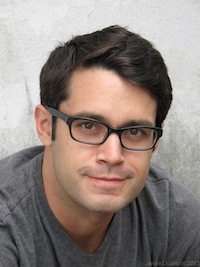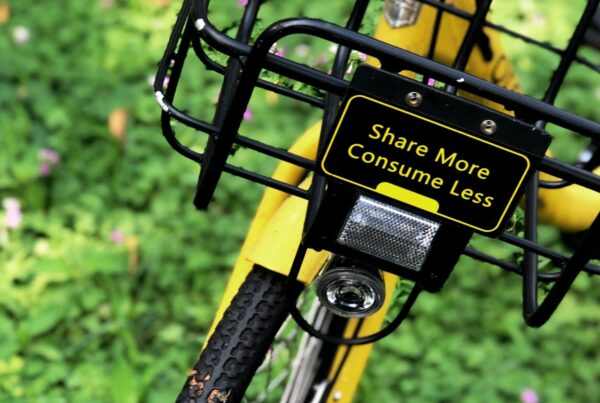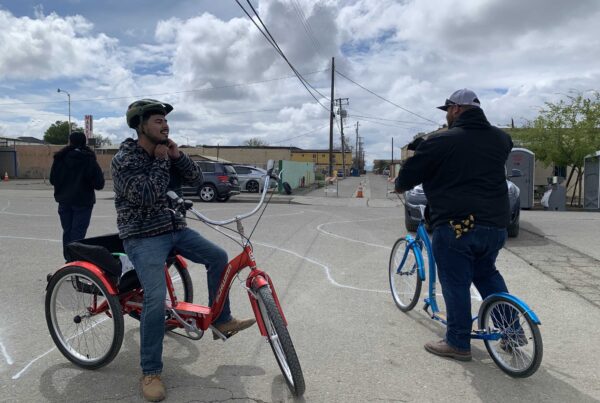Nearly 40% of America’s workforce will be freelancers by 2020, according to a study conducted by software provider Intuit. To capitalize on this trend, Ryder Pearce co-founded SherpaShare in 2014 to serve a growing segement of new independent operators – drivers for Transportation Networking Companies (TNC) like Lyft and Uber.
SherpaShare is an online analytics dashboard to help drivers manage their income and make better work decisions. Before SherpaShare, Ryder founded Pogoride, the first regional long-distance rideshare network in British Columbia, in 2013.
The following is a lightly edited version of the Shared-Use Mobility Center’s conversation with Ryder Pearce. In each issue of SUMC’s newsletter, we will profile a different shared mobility innovator.
How does SherpaShare work?
SherpaShare is a work management platform that allows drivers to save all their earnings, expenses and mileage in one place. You can look at your online dashboard and quickly see if you’re hitting your weekly income goal, or if there are certain days each week that are performing better. You can also see how your data compares with other drivers in your city and use it as motivation to work harder or smarter.
Currently we serve about 10,000 independent contractors. Our biggest markets are San Francisco, Los Angeles and San Diego, followed by Chicago and Austin. But we have drivers everywhere Uber and Lyft operate.
How did you come up with the idea?
I met Jianming Zhou (SherpaShare’s other co-founder) in San Francisco when I was working for Pogoride. We got to talking and realized that, with all that was going on with TNCs, no one was really supporting the drivers. Considering 3/4 of them are working for at least both Uber and Lyft, we saw a real need there. We wanted to be the third party that helps those drivers manage their income and make better work decisions.
What trends are you seeing?
The overlap between TNC and delivery drivers is increasing. We see ridesharing as a gateway to driving for companies like Zesty, Postmates and SpoonRocket. Supply and demand for driving and delivery are complementary because there are different peaks for goods and people flows.
For example, early afternoons might be slow for Uber or Lyft, but good for Postmates or DoorDash. During rush hour you can switch to Uber, and then switch back to food delivery during dinner time. You can also double dip and deliver a package at the same time you’re delivering a meal. We think it’s great to see more on-demand options and are big believers that this type of flexible work is only going to grow.
What are your plans for the year ahead?
One thing we’ll be emphasizing more is the power of SherpaShare’s driver community. This landscape is still very disconnected right now. If you talk to an Uber driver, they’ve probably never met or talked with another driver. We want to bring people together online and in person to talk about the work, ask questions and share tips.
In the future we’re going to be adding more ways for drivers and other on-demand workers to connect. We will also have new mobile apps coming out soon that will be able to help drivers make better real-time decisions when they’re out on the road.
What can you tell us about the TNC driver workforce?
The majority of the workforce is part time. About 80 percent of our drivers are working less than 20 hours a week. Around 75 percent earned less than $10,000 last year. Most use driving to generate some extra income. It’s also great for people like students, semi-retired people or stay-at-home parents. There are a lot of drivers that have switched from driving a taxi full-time to TNCs, but they’re still a small percentage compared with the overall driver pool.
Have you ever tried driving for a Transportation Network Company?
I’ve driven for Uber, Lyft, Sidecar and DoorDash. I still do occasionally. It’s been incredibly valuable to see what works and what doesn’t, and find out what information drivers are missing.
Driving has a kind of randomness to it…you never know where you’re going to go or how busy you’ll be. Sometimes you luck out. I remember once I had three long back-to-back fares, starting at Facebook headquarters and ending in San Jose. The short trips are what kill you; if you can get long ones it’s much better.
What are your hobbies outside of work?
I travel when I can; I went to South America this past December. I also play sports in my free time, usually tennis and squash.




